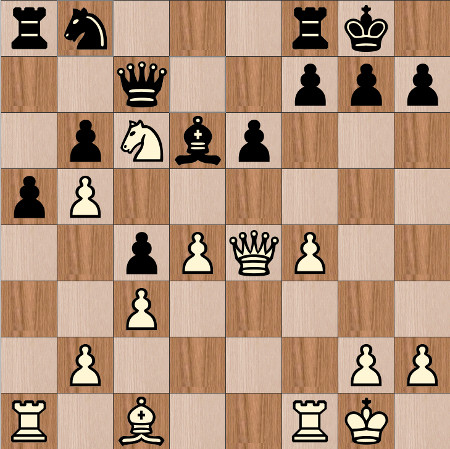It was good to see that Arjun Erigaisi recovered somewhat in the Tata Steel Masters, in the process inflicting the first defeat on Gukesh Dommaraju in a classical game, since he became World Champion. I'm quite sure that this will be just a blip on a great career for Erigaisi, that might well include becoming World Champion himself.
I have been looking at some Erigaisi games of late, partially in an attempt to understand the young generation players who almost effortlessly storm the ranks. From what I can tell they bring together a potent combination of energy, focus and calculating skills. If you play against a good calculator you are under tremendous pressure to avoid mistakes, one slip can be the end of you.
One of Erigaisi's interesting choices on the opening has been the ZOOM Scandinavian, and a couple of his games appeared in the webinar devoted to the Tigerchess.com Themed Training Tournaments. I think he sees it as a line that gets White thinking early on, with the pawn structure offering him chances to outplay his opponent. This series is on special offer this week and it also features in the training tournamets.
Training Tournaments
This week's training tournaments feature the French Defence, and the basic positions in the Classical and Tarrasch Variations:
Sunday February 9th at 5pm UK Time: ZOOM Scandinavian with 1.e4 d5 2.exd5 Qxd5 3.d4 Nc6
My Upcoming Events
Here's my schedule over the coming months, though it is subject to change. I often don't know until fairly late in the day:
February 16-27, 2025: World Senior Team Championship
I've accepted a place in the 50+ second team which means I'll play a much stronger field than on bottom board of the first team. Although this diminishes my chances of winning a medal I'm looking forward to the challenge.
April 4-14 2025: European Senior Team Championship
I finally got confirmation that I'll be in the 50+ 1st team, apparently on board 3 of a team that includes Michael Adams, John Emms, myself, Steve Dishman and Graeme Buckley.
July 31st - 10th August 2025: British Championships
These have now been confirmed for Liverpool on these dates, you can find details here. If I get invited to play in the main Championships, I'll probably accept. Otherwise I'm eligible for both the 50+ and 65+ sections, and should have a chance of doing well in either.
There will probably be at least one or two events between April and the end of July, it's important to keep playing in order to maintain good form.
Twitch Channel
My new Twitch channel has new shows every Monday ('Chess Questions Answered), the Webinar on training tournaments and games is up on Fridays and another weekly coming soon. Please follow it if you'd like to get updates etc, all the shows will be available to Premium members in the Tiger Chess members area, even when they are no longer available on Twitch.
Have a good weekend.
Nigel








